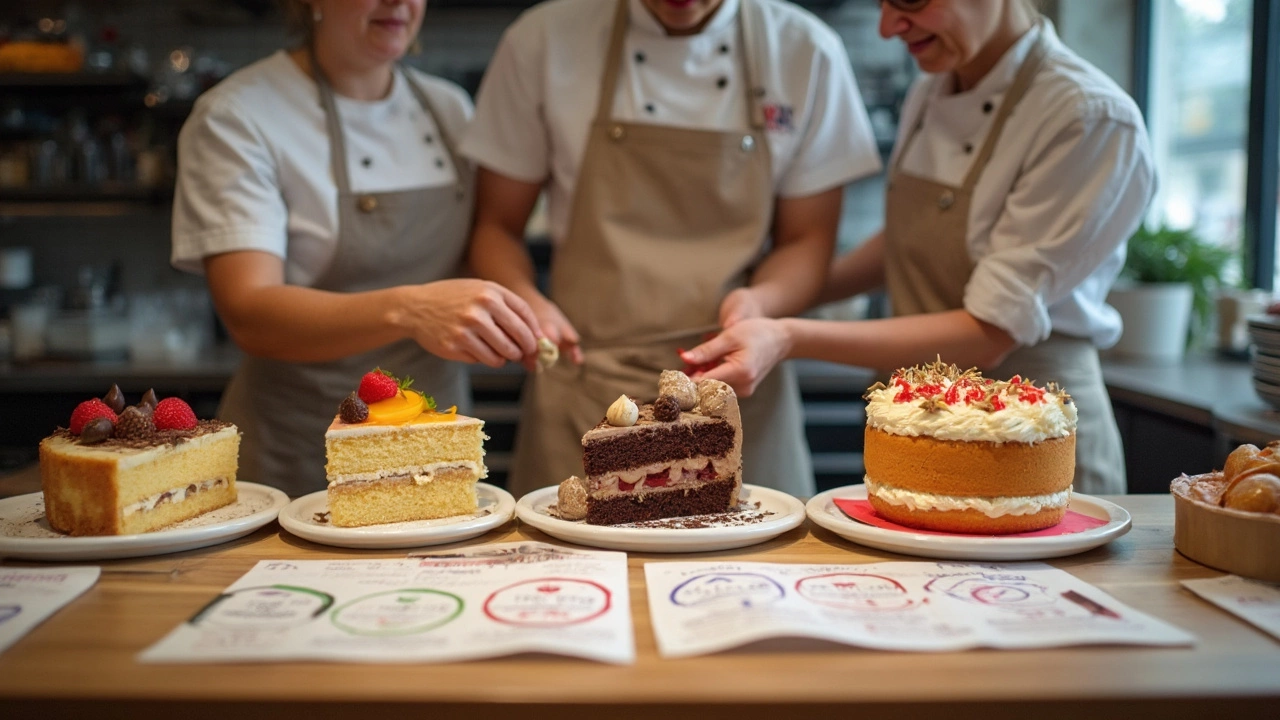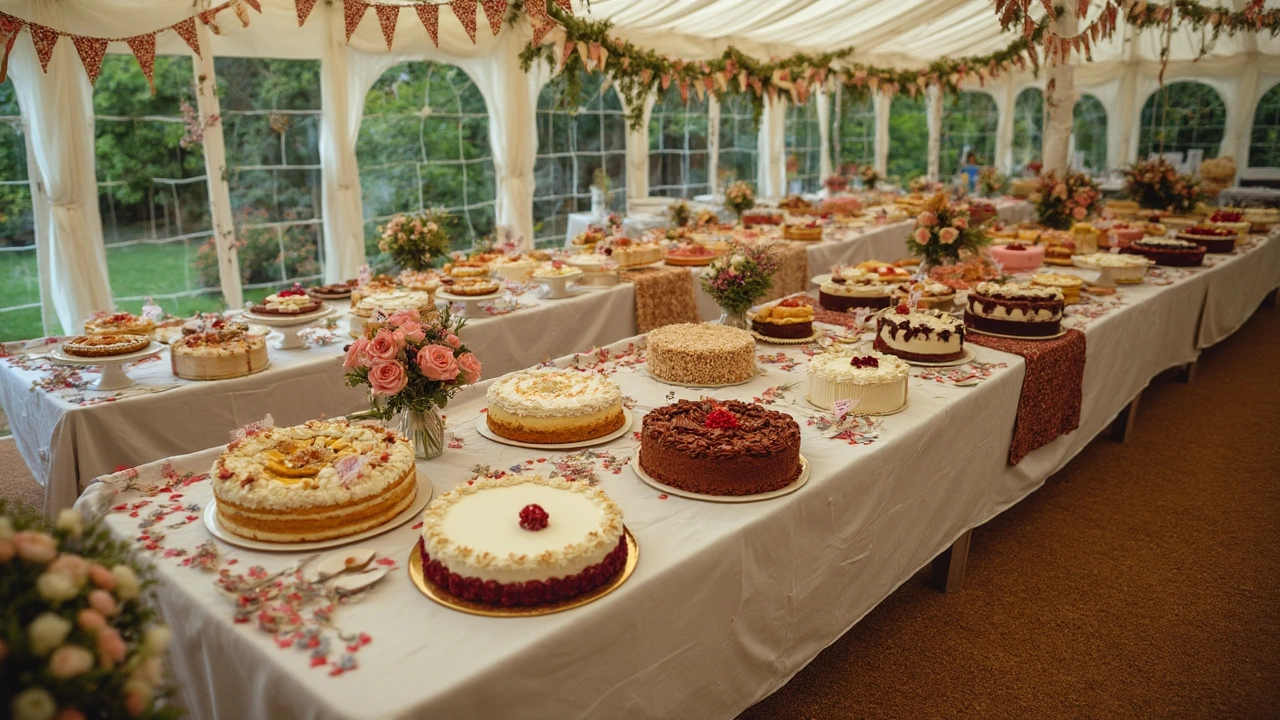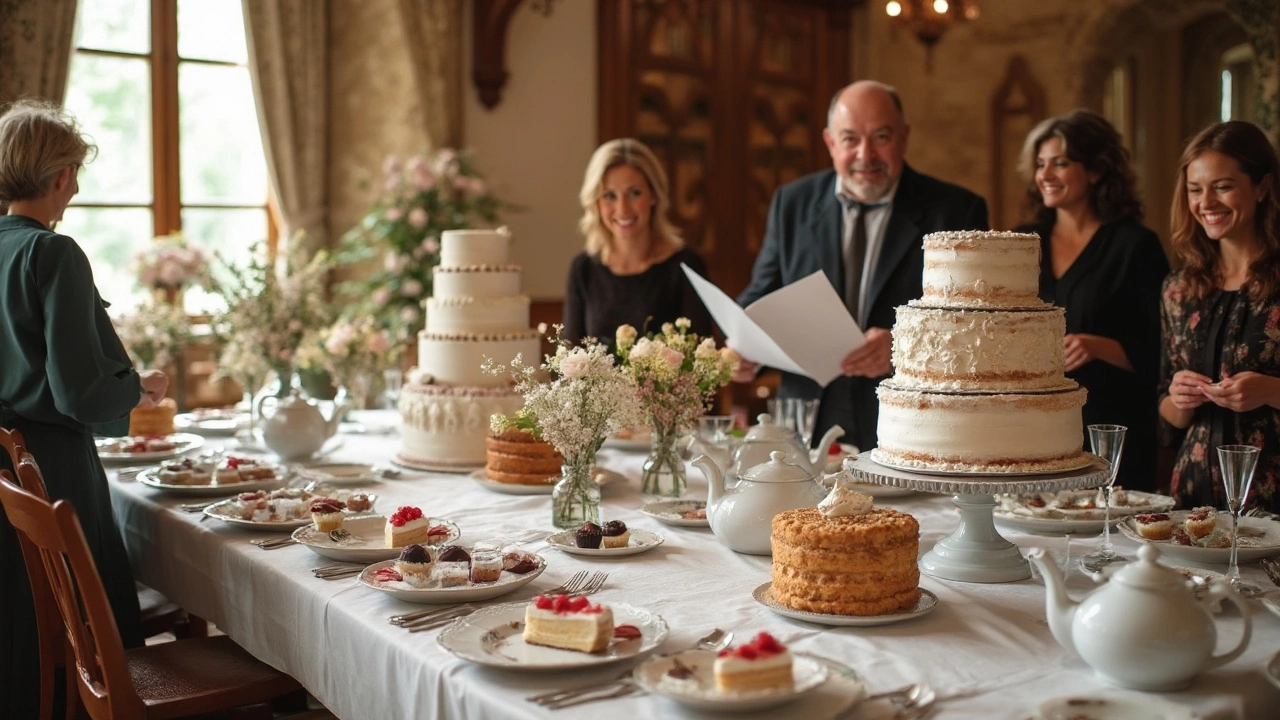You’d think “How much cake do I need for 100 guests?” would have a quick answer. But wait till you stand in front of a bakery, staring at cake displays the size of spaceship parts, and a stranger whispers, “Just order extra! You don't want to run out.” Suddenly, you’re imagining Aunt Hazel fighting little cousins for the last sliver. So, let’s get precise. Why gamble with one of the best parts of any party?
How to Calculate Cake Servings for Big Groups
First things first: cake math can feel like a high school test if you’re not sure what to measure. Not all cakes are created equal. The average cake slice at big events is smaller than your everyday birthday wedge—about 1 x 2 inches for sheet cakes, and a bit thicker for layered cakes. For most events, planners and bakers usually use these standards based on a two-layer cake that’s at least four inches high.
The good news? There are tried-and-true numbers you can count on. Here’s a cheat sheet with sizes and portions, perfect for a wedding, graduation, office party, or wild family reunion:
| Cake Type | Cake Size | Number of Servings |
|---|---|---|
| 1/2 Sheet Cake | 12" x 18" | 40-48 |
| Full Sheet Cake | 18" x 24" | 70-98 |
| Round Cake (2 layers) | 16" diameter | 55-70 |
| Tiered Cake (3 tiers: 12", 10", 8") | - | 100-120 |
| Cupcake | Standard size | 1 per person (often plan 1.5 per guest) |
For a crowd of 100, most pros suggest a 3-tiered cake (12", 10", and 8" rounds), a full sheet cake plus a quarter sheet for comfort, or about 100 cupcakes (but really, get more—people love second helpings). Single-layer cakes or small specialty cakes won’t cut it unless you’re serving tiny squares with tweezers. If you dream of both cake and variety, combining two smaller cakes or a cake plus cupcakes is a hit—no one says no to options.
If you like specifics, the formula is simple: Each guest = 1 serving. Don’t multiply or add “extra” unless you actually want leftovers. Cakes cut for events are thinner than those for casual home eating. If you think your crew has big appetites, add 10% more servings. But don’t panic; 110 slices will safely feed 100 adults and have a sliver or two left for late-night cravings.
Height matters too. Taller cakes feed more people per diameters, because slices can be thinner yet satisfying. Always let your baker know the size they’re building—some cakes look “bigger” because they're taller, but check the serving chart to make sure they’re not fooling your eyes while cheating your guests’ plates.
People always worry about running out, but in reality, at large parties, a few guests skip sweets (imagine that!). Usually, about 10% of guests will pass, balancing out anyone who takes seconds. Still, planning for every soul is safest when cake is the star of the party (hello, weddings and milestone bashes).
But what if you’re mixing cake with other desserts? If a dessert bar is in the works, reduce the cake to about 80 servings for 100 guests. People love variety but will rarely pile their plate with every option—except possibly small children, and that’s what napkins are for.

Choosing Cake Flavors, Styles, and Shapes for 100
You might think picking the cake shape is just about aesthetics, but it actually affects how easily it’s sliced and served. Rectangle sheet cakes and round tiered cakes are tops for large groups because they cut neatly and quickly without crumbling to pieces. Shaped or sculpted cakes (think: castles, numbers, animals) look awesome but are harder to portion equally—so save those for smaller parties unless you’re really skilled with a knife.
For flavor, vanilla and chocolate are still the most requested at big events, but people are getting more adventurous—recent industry data in 2024 showed lemon, red velvet, and cookies-and-cream spiking up in popularity. If you can’t pick, go half-half, or offer different flavors in each tier or layer. That way, even picky eaters have something to love.
Buttercream holds up best and can be kept at room temp for a few hours, while whipped cream fresh cakes are fussier (and not fan favorites for long events). Fondant looks sleek for those magazine-perfect Instagram shots, but flavor purists say you can’t beat homemade buttercream for taste. If you’re doing outdoor summer parties, talk to your baker about frostings that can withstand heat—no one wants a melting cake centerpiece before “Happy Birthday.”
If you order from a professional bakery, most will handle “event slicing,” which gets you the right number of servings. But if you’re making it yourself or ordering from a grocery store, use simple measurement guides or online calculators to be sure. Lost the serving chart? Grab a ruler, cut slices around 1x2 inches, and work your way around. Even strips sliced from a sheet cake work just fine—most guests aren’t expecting bakery-perfect wedges by the end of the night.
Want to avoid flavor FOMO? Ask your baker for a taster box or mini samples. If you’re ordering multiple cakes, pop little paper labels on the table saying what’s inside—fun, easy, and stops mystery bites.
Lately, some planners get clever with a “dummy” display cake for pictures and sheet cakes for serving behind the scenes. It spares the budget and makes sure every slice is fresh. Ask your bakery—most do this, especially for weddings and high-traffic events.

Cost-Saving Hacks, Serving Tricks, and Must-Know Cake Facts
Cake for 100 can get pricey—a custom tiered cake might run anywhere from $400 to over $800, depending on flavors, design, and location (big city bakeries often charge double suburban spots). Sheet cakes are the most budget-friendly, usually about $2-$4 per serving, with less fuss and easy slicing. Combine a smaller fancy “show” cake for photos with simple sheet cakes to save money while still looking stylish. No shame—lots of 2024-2025 weddings use this trick.
Here’s a cool fact: people consistently rate cake as the #1 most-remembered party food—beating out fancy appetizers and cocktail bars. Cake doesn’t just feed people, it caps off your celebration. So if you’re torn about splurging, just know it’s the one menu item everyone will notice (and maybe Instagram, too).
- Cut the first round out of the middle—not the edges. This keeps the cake from drying out if you’re serving slowly.
- Use a hot knife (dip in hot water and wipe dry) for clean slices—especially with chocolate or fondant.
- Have a few take-home boxes handy. There’s always someone who wants midnight cake.
- If kids are in the mix, small slices are rarely a problem—parents thank you for less sugar-mania and easier clean up.
Another tip from the pros: Always transport big cakes in separate layers and stack them on arrival at the venue to prevent disaster in the car. It’s easier than you think—bakery staff can show you, or YouTube has hundreds of step-by-step videos. Secure in a flat, cool space in your car, and don’t forget the non-slip mat underneath!
For portion control, print out a little “serving guide” for whoever is slicing. It’s as easy as a basic diagram showing where to make cuts, and it keeps slices even—so no brawls over cake size. Make it fun with cute icons or colors; people appreciate knowing what’s fair game.
Bottom line: for 100 guests, a cake yielding close to 100 servings will do the trick. Go 10% higher if your crowd is serious about dessert, or if cake is the only sweet thing on offer. Tiered cakes or a combo of sheet and cupcakes work perfectly, and there’s nothing wrong with a little buffer—you never want to tell someone the cake is gone unless you’re sure everyone’s had a bite.
Once you’re armed with numbers and flavor ideas, you can order like a pro, skip the panic, and let your biggest party worry be whether to save the top tier for your first anniversary—or just eat it right away.
